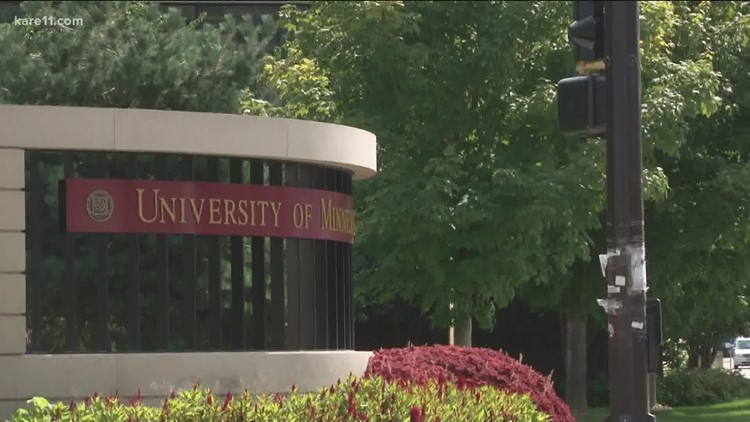MINNEAPOLIS — Several dozen positive COVID-19 tests are driving a small surge at the University of Minnesota during the first few weeks of the fall semester. Campus officials said this was expected, and it reflects the growing case numbers seen statewide.
The U of M is home to more than 70,000 students, faculty, and staff. It is in the process of welcoming back full, in-person classes for the first time since the start of the pandemic.
Classes for nearly 50,000 students started on Sept. 7, and by then 26 cases of coronavirus were reported among students and staff since the move-in weekend in late August.
But since the first week of in-person classes, there were 36 cases of coronavirus reported. The most recent data goes up to Friday, Sept. 16, and shows more than 9% of the school’s isolation room space is filled.
“If you look back into the dashboard numbers online, the University saw slight upticks in cases around the start of spring semester (late January) as well as Spring Break last year,” said U of M Director of Public Relations Jake Ricker in an email.
So far this recent rise in cases is the smallest of the last four. The largest spike in cases was reported in November of 2020 where 263 cases were reported among students, staff and faculty out of 1,335 tests.
A lot has changed for this semester’s spike in cases as well. Perhaps the biggest protection against the further spread of the virus is the fact that nearly 98% of all students are vaccinated.
Students have until Oct. 8 to provide proof of vaccination or religious/medical exemption.
There is also a campus-wide mask mandate for all indoor operations, according to a campus-wide email back in August.
While there is no testing requirement for students, even for those unvaccinated, free testing is readily available through Boynton Health, and testing numbers have been incrementally increasing since students moved in three weeks ago.
There is also no testing requirement for students at the University of Wisconsin-Madison, but testing rates have soared on-campus, and so have case numbers, sometimes reporting dozens of cases per day.
While the university reported 6,854 tests for both students and employees from September 10 to 16, 269 of those were reportedly positive for a 3.8% positivity rate.
While the numbers are larger, the positivity rate at the University of Wisconsin-Madison is less than the U of M, which has a 4.1% positivity rate for the same time period.
The University of Wisconsin-Madison also has a lower vaccination rate, according to its dashboard data. 91% of students are fully vaccinated.
For students attending the University of Minnesota, a high vaccination rate and other safety protocols give them peace of mind.
Carson Freund is a sophomore studying sociology. He said students in large lectures have the opportunity to miss class if they feel ill and can re-listen to the lecture recorded online.
“If people continue to not show up when they’re not feeling well, hopefully, that will help us contribute to a safe environment in class,” Freund said.
Freund, a transfer student from an online college, says he’s prepared to shift to online if cases continue to worsen, but said in-person learning is preferred.
“It feels great, I mean, being able to get that one-on-one instruction, the lecture's in person, asking questions. Whereas online, you have to set up appointment times to meet with teachers, in person you can just ask them if you have trouble,” he said.
The university is expecting cases not to worsen to the point of requiring another online shift and said numbers should go down in several weeks.
“You're seeing a similar bump in those numbers as students return to our campus, including the largest first-year student class in more than 50 years,” Ricker wrote in an email. “In previous instances, these initial changes in case counts returned to previous levels in subsequent weeks.”
A list of resources you can access as a student or faculty member at one of the University of Minnesota’s several campuses is available here. It has full guidance on face coverings as well as contact information if you have questions on your campus’s pandemic approach.



